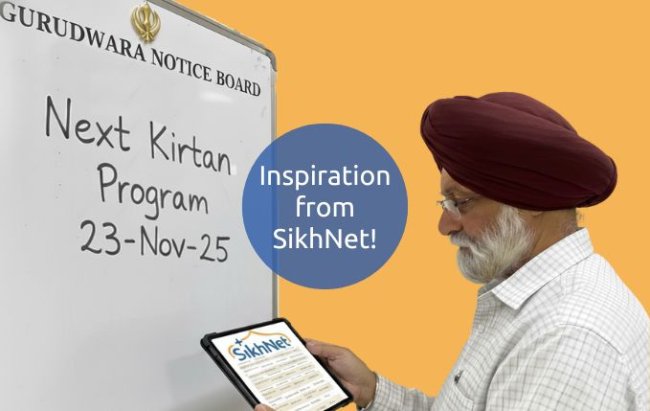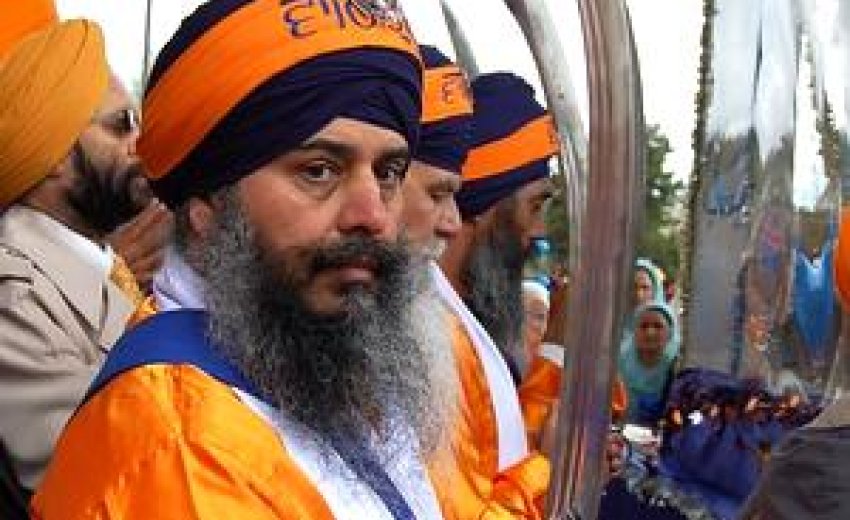Selma became a little more colorful
Sunday as thousands of Sikhs dressed in traditional Indian clothing
walked through the streets to celebrate the 309th anniversary of their
religion.
Sarees and turbans of every color could
be seen on the women and men gathered at the Sikh Center of the Pacific
Coast on Highland Avenue in Selma as people filled themselves with free
food, worshipped in the temple, and browsed through the booths selling
various items.
The event marked the last day in a
three-day celebration that began on April 11 with continuous prayers
for the well-being of all mankind.
"We pray for the whole world for peace and harmony," Mohinder Singh Sandahalia said. "We respect every human being."
This was the 14th time that the parade,
called Nagar Kirtan, has taken place in Selma. Representatives from the
Sikh Council of Central California estimated that anywhere from 8,000
to 10,000 Sikhs from throughout California attended the event.
Although there were about 10 floats
filled with people, most of the Sikhs joined in the parade on foot,
walking for more than three hours to commemorate Vaisakhi Day.
Vaisakhi Day is the day that the 10th
master of the Sikhs -- Guru Gobind Singh Ji -- created the order of the
Khalsa, a brotherhood and sisterhood devoted to purity of thought and
action.
Sandahalia said that every Sikh in the
order of the Khalsa has to have five things: Kesh, uncut hair; Kanga, a
wooden comb to clean the hair; Katchera, specially made underwear as a
reminder of the commitment to purity; Kara, a steel circle to symbolize
an unbreakable bond to God; and Kirpan, a sword used to protect the
weak and needy.
"The Kirpan is only used for self defense and to help the poor," Sandahalia said.
Being a Khalsa Sikh means "being saintly and not harming anyone," he said.
The Sikh religion believes in one supreme
God and in the universal brotherhood of mankind. In daily prayers,
Sikhs wish and pray for the well being of the whole human race,
according to the Sikh Council of Central California.
Keeping with this belief, the thousands
of Sikhs who participated in the anniversary celebration during the
weekend spent much of their time in prayer and worshipping at the
temple.
The actual parade began around 11 a.m. on
Sunday, with holy blessings being given out from the head float by head
priest Bhai Amarjit Singh of the Pacific Coast Khalsa Diwan Society.
"Most of the people here, 99 percent of
them, covered their head to show respect," Sandahalia said as people
gathered around the float in silence, briefly bowing their heads. "In
the whole world, no one has so much respect for their belief as we
have."
After the blessings had been given out,
the head float led the way through the three-mile route of the parade,
followed by several other floats and thousands of people on foot.
Councilman Dennis Lujan, who has attended
the event for many years, said that he has had the privilege in the
past to ride in the parade.
"It's one of the most amazing views, looking back and seeing thousands of people walking behind you," he said.
Clara and Bill Bronder were two of the few non-Sikhs to show up at the Sikh Center to witness the event.
"We're new to the area and we wanted to
see what it's all about," Bill Bronder said. "It (the parade) was
colorful, it was very interesting."
Other Selma residents who stepped out
from their houses and businesses along the route to see the parade were
given free water and snacks by the Sikhs as they went by.
The parade, which lasted until after 2 p.m., was followed by continued worship and free dinner at the temple.

